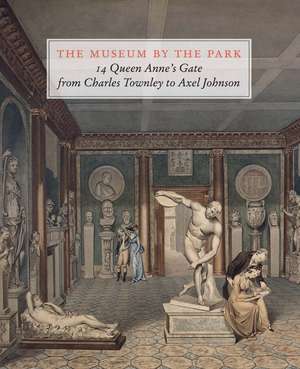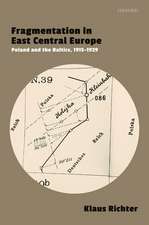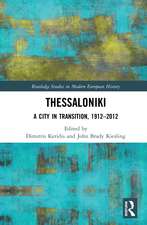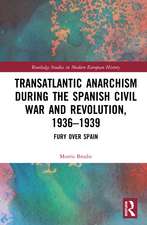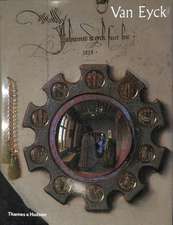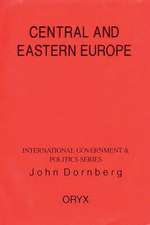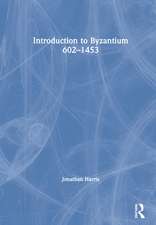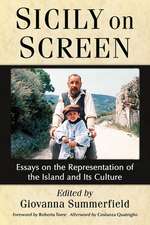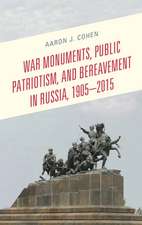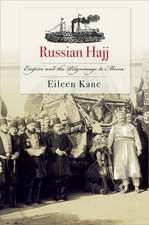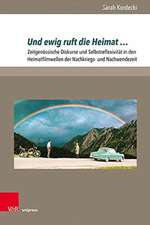The Museum by the Park: 14 Queen Anne’s Gate, from Charles Townley to Axel Johnson
Autor Max Bryanten Limba Engleză Hardback – 21 noi 2017
The
depth
of
history
at
Queen
Anne’s
Gate
–
a
handsome
Baroque
street
overlooking
St
James’s
Park
–
is
unusual
even
in
London,
and
few
houses
resonate
with
more
memories
than
the
extraordinary
number
14.
The
story
of
the
house
over
the
centuries
features
political
revolutionaries,
occult
initiations,
clandestine
war
meetings,
and
a
decapitated
head.
It
begins,
however,
as
a
museum
of
Roman
sculpture,
unrivaled
outside
Italy,
designed
for
connoisseur
and
virtuoso
Charles
Townley
(1737–1805).
Townley
embodied
Enlightenment
values
perhaps
more
completely
than
any
other
figure
in
the
art
world
of
18th-century
Britain
–
his
portrait
by
Johann
Zoffany
(seen
above)
is
one
of
the
iconic
paintings
of
the
period
–
yet
remarkably
he
has
never
been
the
subject
of
a
major
publication.
Written
with
a
sparkle
matching
Townley’s
own
enthusiasm,
this
beautiful
and
engaging
publication
tells
the
story
of
14
Queen
Anne’s
Gate
and
examines
the
extraordinary
life
of
Charles
Townley
and
his
remarkable
collection
of
over
150
Roman
marble
statues
(mostly
now
in
the
British
Museum
but
captured
in
spectacular
engravings
of
the
period).
It
will
be
a
revelation.
The
house
was
designed
as
a
temple
to
the
past,
reviving
in
the
modern
city
the
occult
practices
of
the
ancient
world.
Here
visitors
in
eighteenth
century
would
have
found
an
assembly
of
Roman
sculpture
unrivaled
outside
Italy,
as
well
as
a
library
and
collection
devoted
to
understanding
a
universal
‘generative
sprit’
worshipped
by
early
civilizations.
That
spirit
may
be
found
in
the
succession
of
major
roles
the
house
has
continued
to
take
through
generations
of
dramatic
change
up
to
the
present
day.
Charles
Townley,
for
whom
the
house
was
built,
was
a
figure
both
marginal
and
emblematic.
Catholic
and
bisexual,
he
forged
a
life
literally
on
the
borders
of
the
Protestant
British
establishment.
He
remains
little
understood
or
appreciated
in
his
homeland
and,
remarkably,
has
never
been
the
subject
of
a
major
exhibition
or
publication.
The
‘emblematic’
side
of
Townley’s
life
was
dedicated
to
virtù,
the
term
used
for
an
appreciation
of
fine
art
pursued
for
its
own
sake.
The
‘marginal’
side
of
Townley,
by
contrast,
manifested
itself
in
a
fascination
with
the
ancient
occult,
particularly
the
Bacchic
mysteries.
The
house
he
made
for
himself
was
at
once
a
temple
to
virtù
and
to
Bacchus
and
contained
an
unprecedented
program
of
Bacchic
iconography.
Preț: 196.51 lei
Nou
Puncte Express: 295
Preț estimativ în valută:
37.61€ • 39.12$ • 31.05£
37.61€ • 39.12$ • 31.05£
Carte disponibilă
Livrare economică 24 martie-07 aprilie
Livrare express 08-14 martie pentru 39.46 lei
Preluare comenzi: 021 569.72.76
Specificații
ISBN-13: 9781911300328
ISBN-10: 1911300326
Pagini: 128
Ilustrații: 100 colour illus.
Dimensiuni: 216 x 259 x 20 mm
Greutate: 0.77 kg
Editura: Paul Holberton Publishing
Colecția Paul Holberton Publishing
ISBN-10: 1911300326
Pagini: 128
Ilustrații: 100 colour illus.
Dimensiuni: 216 x 259 x 20 mm
Greutate: 0.77 kg
Editura: Paul Holberton Publishing
Colecția Paul Holberton Publishing
Descriere
The depth of history at Queen Anne’s Gate – a handsome Baroque street overlooking St James’s Park – is unusual even in London, and few houses resonate with more memories than the extraordinary number 14. The story of the house over the centuries features political revolutionaries, occult initiations, clandestine war meetings, and a decapitated head. It begins, however, as a museum of Roman sculpture, unrivaled outside Italy, designed for connoisseur and virtuoso Charles Townley (1737–1805). Townley embodied Enlightenment values perhaps more completely than any other figure in the art world of 18th-century Britain – his portrait by Johann Zoffany (seen above) is one of the iconic paintings of the period – yet remarkably he has never been the subject of a major publication. Written with a sparkle matching Townley’s own enthusiasm, this beautiful and engaging publication tells the story of 14 Queen Anne’s Gate and examines the extraordinary life of Charles Townley and his remarkable collection of over 150 Roman marble statues (mostly now in the British Museum but captured in spectacular engravings of the period). It will be a revelation. The house was designed as a temple to the past, reviving in the modern city the occult practices of the ancient world. Here visitors in eighteenth century would have found an assembly of Roman sculpture unrivaled outside Italy, as well as a library and collection devoted to understanding a universal ‘generative sprit’ worshipped by early civilizations. That spirit may be found in the succession of major roles the house has continued to take through generations of dramatic change up to the present day. Charles Townley, for whom the house was built, was a figure both marginal and emblematic. Catholic and bisexual, he forged a life literally on the borders of the Protestant British establishment. He remains little understood or appreciated in his homeland and, remarkably, has never been the subject of a major exhibition or publication. The ‘emblematic’ side of Townley’s life was dedicated to virtù, the term used for an appreciation of fine art pursued for its own sake. The ‘marginal’ side of Townley, by contrast, manifested itself in a fascination with the ancient occult, particularly the Bacchic mysteries. The house he made for himself was at once a temple to virtù and to Bacchus and contained an unprecedented program of Bacchic iconography.
